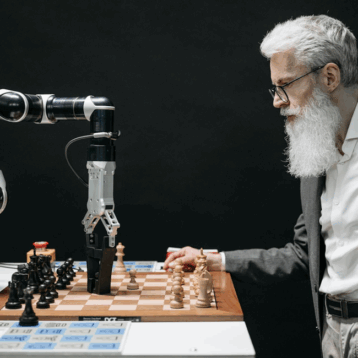
Personal injury litigation, the legal process of seeking compensation for harm caused by another party’s negligence, has long served as a cornerstone of the legal system. Yet, like all aspects of society, personal injury law is constantly evolving, shaped by technological advancements, social changes, and shifting legal precedents. This article explores the potential future of personal injury litigation, examining key trends and potential challenges that may reshape this dynamic legal field.
The Rise of Technology: A Double-Edged Sword
Technology undeniably influences the future of personal injury law. Here’s a closer look at two key aspects:
Enhanced Evidence Gathering and Analysis:
Digital Data: The explosion of digital data generated in daily life, from smartphone records to social media posts, is transforming how evidence is gathered and analyzed. Personal injury lawyers can leverage this data to reconstruct accident events, demonstrate injuries, and strengthen their case.
Wearable Technology: Devices like fitness trackers and dashcams can provide valuable evidence of a person’s activity levels, health status, or even capture accident footage.
Accident Reconstruction Software: Sophisticated software tools can be used to reconstruct accident scenes in 3D, offering a more precise understanding of collision dynamics.
These advancements can be a boon for plaintiffs, helping establish fault and the extent of injuries. However, concerns around privacy and data security remain. Additionally, the technical expertise needed to analyze and present complex digital evidence might create challenges for smaller law firms.
Artificial Intelligence (AI) in Personal Injury Law:
- Case Evaluation and Prediction: AI-powered tools might analyze legal precedents, assess case strengths and weaknesses, and even predict potential outcomes. This can help lawyers strategize more effectively and guide clients on settlement options.
- Legal Research and Document Review: AI can streamline legal research by quickly sifting through vast amounts of case law and legal documents, saving lawyers valuable time and resources.
While AI holds promise for streamlining tasks and enhancing legal research, ethical considerations regarding bias and the human element of legal decision-making require careful attention. The role of lawyers will likely shift towards leveraging AI-powered tools while focusing on strategy, client communication, and human judgment.
The Evolving Landscape of Medical Records
The way medical records are accessed and used in personal injury cases is undergoing a transformation:
- Electronic Health Records (EHRs): The widespread adoption of EHRs streamlines access to medical records, potentially expediting the legal process. However, concerns around data privacy and ensuring complete and accurate electronic records remain.
- Telemedicine and Remote Monitoring: The growing use of telemedicine and remote patient monitoring can create gaps in traditional medical recordkeeping. Developing clear guidelines for capturing and storing data collected remotely will be crucial for its use in legal proceedings.
- Wearable Technology and Health Data: Data from wearable health trackers can provide valuable insights into a person’s health and activity levels, potentially impacting how injuries and related limitations are assessed. The legal framework for integrating and analyzing this data in personal injury cases needs further development.
These advancements require legal professionals to adapt and develop strategies to access and utilize these new forms of medical evidence effectively.
The Gig Economy and Changing Workforces
The rise of the gig economy and non-traditional work arrangements presents new challenges for personal injury claims:
- Establishing Employer-Employee Relationship: For independent contractors or gig workers injured on the job, determining liability and securing worker’s compensation benefits can be complex.
- Calculating Lost Wages: Calculating lost wages for individuals with fluctuating work schedules or those who rely on multiple income streams can be challenging compared to traditional salaried employees.
The legal system needs to adapt to address these emerging workforce models and ensure injured workers receive fair compensation.
Shifting Legal Trends: A Look Ahead
- Focus on Alternative Dispute Resolution (ADR): Mediation and arbitration, which offer a faster and less expensive alternative to traditional litigation, might become more prominent in resolving personal injury cases.
- Increased Scrutiny of Medical Expenses: The rising cost of healthcare might lead to increased scrutiny of medical expenses in personal injury cases. Lawyers need to be prepared to justify the reasonableness of medical bills presented as part of a claim.
- Emerging Areas of Liability: As technology advances, new areas of personal injury law might emerge, such as product liability claims related to artificial intelligence or autonomous vehicles.
The Human Element: Why Lawyers Remain Essential
Despite the rise of technology and evolving legal trends, the human element remains irreplaceable in personal injury law. Here’s why skilled personal injury lawyers in Denver, Colorado will continue to be vital:
- Client Communication and Empathy: Navigating the legal process can be stressful for client Lawyers providing emotional support, guidance, and clear communication throughout the case. This personalized approach ensures clients feel heard and understood during a challenging time.
- Strategic Negotiation and Case Management: Lawyers leverage their experience and legal knowledge to negotiate effectively with insurance companies, maximizing compensation for their clients. They also navigate the complexities of litigation, ensuring adherence to legal procedures and deadlines.
- Understanding Complex Medical Issues: Personal injury cases often involve complex medical conditions and treatment plans. Lawyers work with medical professionals to understand the full extent of injuries and their long-term impact, ensuring these factors are accurately reflected in the claim.
- Adaptability and Continuous Learning: The legal landscape is constantly evolving. Skilled lawyers demonstrate a commitment to continuous learning, staying abreast of technological advancements, changes in legal precedents, and emerging areas of personal injury law.
While technology can streamline tasks and provide valuable data, it cannot replace the human touch, strategic thinking, and client advocacy that experienced personal injury lawyers offer.
Conclusion: Embracing Change and Ensuring Justice
The future of personal injury law promises to be dynamic and multifaceted. Technological advancements, shifting legal trends, and evolving workplaces are reshaping the landscape. By embracing these changes, adapting strategies, and leveraging new tools, legal professionals can continue to uphold the core principles of personal injury law: ensuring fair compensation for those injured due to negligence, holding responsible parties accountable, and fostering a system that prioritizes safety and well-being.
Ultimately, the future of personal injury law lies in striking a balance between technological innovation and the irreplaceable human element. Empowered by knowledge, adaptability, and a commitment to justice, legal professionals can navigate the evolving landscape and continue to ensure a fair and just system for those who have been injured.










